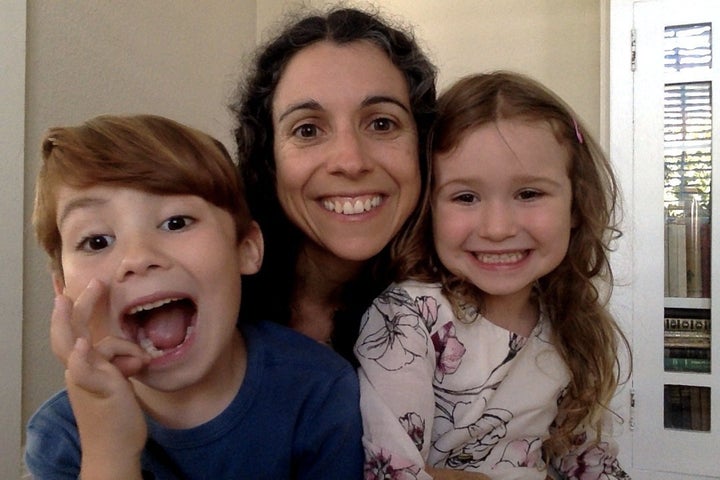During her five-and-a-half-year battle with infertility, Julieta Pisani McCarthy bought organic foods and chose personal care products free of synthetic ingredients such as parabens and phthalates. And when she finally did become pregnant with her first son, Nicolas, she continued her diligence, including ridding her home of any furniture foam that might contain chemical flame retardants.
McCarthy worried that environmental chemicals could have contributed to her difficulty conceiving. Once pregnant, she worried that toxins could harm her child's healthy development. Such fears are shared by many Americans. More than 80 percent of those polled in 2009 were concerned about the lack of safety testing for chemicals on the market in the U.S. Yet McCarthy didn't find her doctors forthcoming when she posed questions about pollutants, such as PCBs and pesticides, which have been found in nearly all samples of breast milk and cord blood, per studies from the University of California, Berkeley; the nonprofit Environmental Working Group; researchers in Quebec and others.
"When I asked my doctors — from my regular OB/GYN to top-notch research center reproductive endocrinologists — they were all very hesitant to give me any answers," McCarthy, 40, of Berkeley, California, told The Huffington Post as she prepared a party for Nicolas' sixth birthday in early October.
And indeed, a nationwide survey of obstetricians and gynecologists in 2012 found that most did not warn their pregnant patients about how chemicals in food, consumer products or the environment could endanger their unborn babies.

While still frequently dismissed as fringe beliefs, concerns over chemicals are attracting increased attention from professional medical associations. A critical mass of data now connects exposures to some environmental chemicals with infertility as well as long-term health problems. And that, combined with newly crafted positions and petitions -- and even a recently severed industry partnership -- by respected professional organizations, may push doctors to look at this issue anew.
"It used to just be, 'Don't smoke and don't drink,'" said Julie Herbstman, who researches environmental toxins at Columbia University's Mailman School of Public Health. "Now, because of new data and powerful statements from important societies, clinicians are starting to get guidance and can advise their patients on environmental health."
And that advice, she noted, can include potentially powerful, practical steps to reduce toxic exposures.
Medical associations echo consumer concerns
Earlier this month, leading physicians and scientists from around the world convened in Vancouver, Canada, for the International Federation of Gynecology and Obstetrics conference. Central to their discussions were the reproductive health impacts of toxic chemical exposures and the need for physicians and other health professionals to make environmental health part of health care, as well as to advocate for stronger toxic chemical regulation.
The average pregnant woman in the U.S. carries at least 43 industrial chemicals in her body, according to an opinion released ahead of the conference by FIGO, which represents obstetrical and gynecological associations from 125 countries. And exposure to this chemical cocktail, the association warned, may make it more difficult for a woman to become pregnant, carry her fetus full-term, give birth to a healthy baby and trust that her child will grow up a disease-free and fertile adult. They further point to emerging studies that suggest toxic exposures can cause harm across generations.
Exposures very early in life are particularly worrisome, according to FIGO. Even tiny amounts of some chemicals common in plastics, couches, nonstick fry pans and other everyday products can potentially derail the development of a fetus' brain and other organs, possibly setting up a child for long-term health troubles such as attention deficit hyperactivity disorder and certain cancers.
In this, FIGO’s call echoes a warning published in September by another major medical organization, the Endocrine Society. In its statement, based on a review of the scientific literature, the group concluded that certain chemicals can mimic natural hormones and thereby mess up critical functions in the human body, including reproduction and metabolism. Minute concentrations of bisphenol A, phthalates and dioxin, among others, could exert these potent hormone-disrupting effects.
The American Academy of Pediatrics is also stepping up its involvement on the toxic chemical issue. In March, it signed a petition to the Consumer Product Safety Commission seeking to ban products that contain organohalogen flame retardants. And, in October, news emerged that the AAP will end its corporate ties with Monsanto, whose popular herbicide, Roundup, has been linked by studies to birth defects, cancers and other health problems. The move reportedly came after a mom reached out to the academy with her concerns over the partnership.
“As these more conservative organizations finally acknowledge this in a formal way, it does indicate a transition away from dismissing or overlooking the role of environmental toxins and pollution in human health, towards recognizing this as something we can’t ignore any longer,” said Bruce Lanphear, an environmental health expert at Simon Fraser University in British Columbia.
The chemical industry is critical of both FIGO and the Endocrine Society, suggesting their latest claims of harms posed by certain chemicals remain unproven. "The [FIGO] report also disregards the critical role chemicals play in making modern life safer, healthier, more sustainable, more convenient and more fulfilling," Scott Openshaw, an American Chemistry Council spokesperson, told The Huffington Post in an emailed statement.

Mounting evidence of early-life harms
Columbia’s Herbstman is an author of a study published in October that found that the more polybrominated diphenyl ethers that researchers detected in a woman's cord blood during pregnancy, the more attention problems her child displayed during preschool and early adolescence. Polybrominated diphenyl ethers, or PBDEs, are a class of chemicals used as flame retardants. Herbstman noted that while PBDEs are being phased out, it remains unclear if their replacements are any safer. PBDEs can also linger in homes and the environment via used and discarded furniture.
The new finding is just one of a number of recent headlines concerning the health consequences of exposure to toxic chemicals in the womb and via breastmilk. Studies published over just the last couple months have identified links between prenatal BPA exposure and both low birthweight in baby girls and decreased physical activity in mice. They've also described how exposures to methyl mercury, stain- and stick-resistant chemicals and certain pesticides in the womb may result in risks of lower IQ, low birthweight and childhood obesity respectively. Another pair of studies published in the last month hint at potential links between low sperm counts and premature births and the chemicals used in natural gas drilling, fracturing and production operations.
"Really, we are a little bit late" in addressing this issue, said Dr. Gian Carlo Di Renzo, lead author of the FIGO opinion and director of the Reproductive and Perinatal Medicine Center at the University of Perugia in Italy. "The threat of toxic chemical exposures to human reproduction, especially over the last decades, has been dramatically increasing."
Balancing awareness and alarm
Still, health experts emphasized the importance of not overwhelming patients.
"How do we, as clinicians, balance providing the most appropriate information to our patients so they can be aware without being alarmed?" said Dr. Jeanne Conry, an obstetrician and gynecologist with The Permanente Medical Group in Roseville, California, and an author of the FIGO opinion.
The answer is "tricky," Herbstman said. She recalled the anxiety she felt while pregnant with her child, now 2 years old: "It was a long nine months for me."
"While I tried to take reasonable steps, I also live in the world," she added. "I don't think we can eliminate all exposures. And I didn't want to stress myself out to the point that I'd make myself sick." (Stress, too, it turns out, may be harmful to unborn babies -- possibly making them more prone to anxiety later in life.)
Conry, Herbstman and other experts offered a number of practical steps to reduce the risk of toxic chemicals infiltrating your body (and your baby), such as microwaving in glass rather than plastic, eating organic foods when possible, choosing fish lower on the food chain to minimize mercury levels, regularly cleaning your home with a wet mop, recirculating your car's air when driving on heavily trafficked freeways and frequently washing your hands with soap. (Using hand sanitizer, Herbstman advised, isn't enough.)

Alexandra Destler, another Berkeley mother who has been frustrated by the lack of environmental health information from her doctors, created her own guide for prenatal care providers and patients called My Safety Nest.
"I live in a very progressive, environmentally aware community. Yet I meet moms all the time who have little to no idea of the health risks associated with toxic chemicals," said Destler.
"I think it's going to be a bit of a journey to change the system," she added. "But as more women have the expectation that this should be part of prenatal care, I think that will motivate health care providers to expedite their learning curve on this topic."
During her pregnancy with Nicolas, McCarthy worked with the Program on Reproductive Health and the Environment at the University of California, San Francisco, to compile vetted recommendations into another toolkit for navigating environmental toxins, Toxic Matters. (The brochure is also available in Spanish.)
McCarthy followed up with The Huffington Post after Nicolas' birthday party. She recalled how they sang to him in English and Spanish, her native language, before he blew out his six candles. "In Argentina, we usually make three wishes," McCarthy said. "As he blew, I was making for him the same three wishes I've been making since I started struggling with infertility 12 years ago: Health. Health. Health."
"I look at my kids' bodies and think about the thousands of chemicals already in them despite my best efforts to limit their exposure even before the time I could feel them grow inside me," she added. "And I hope they will be OK."